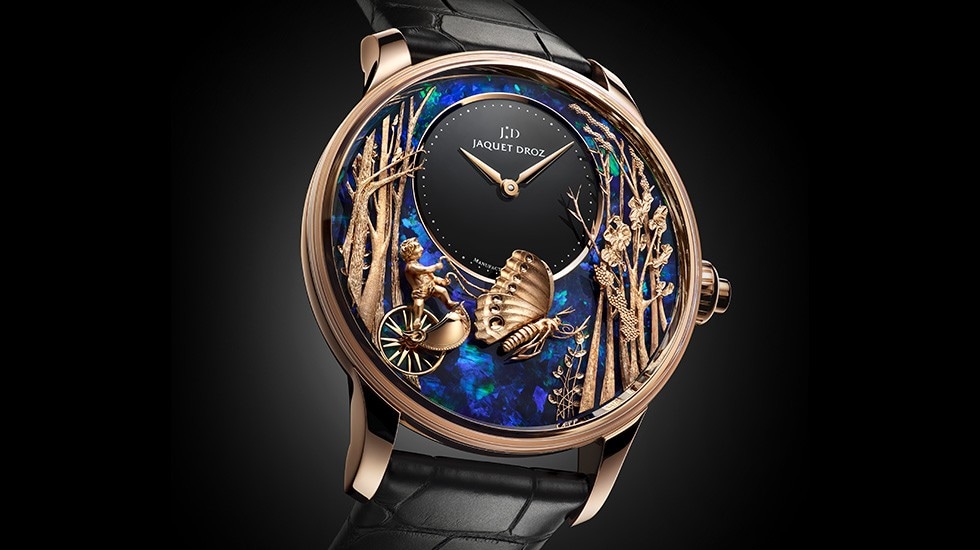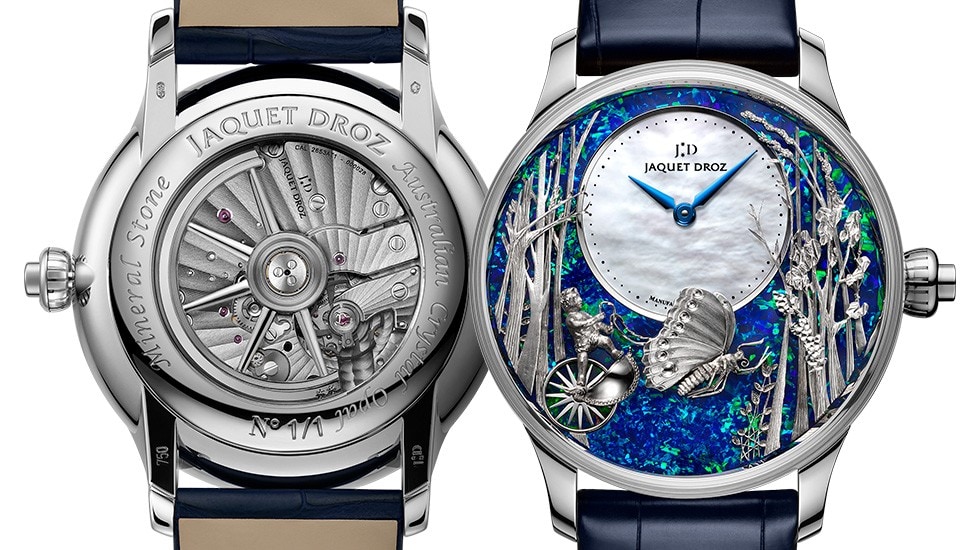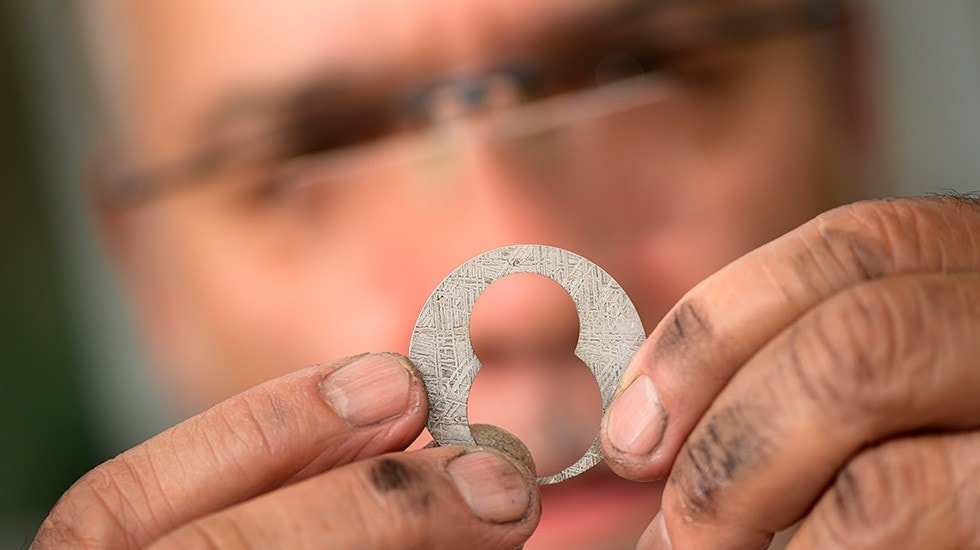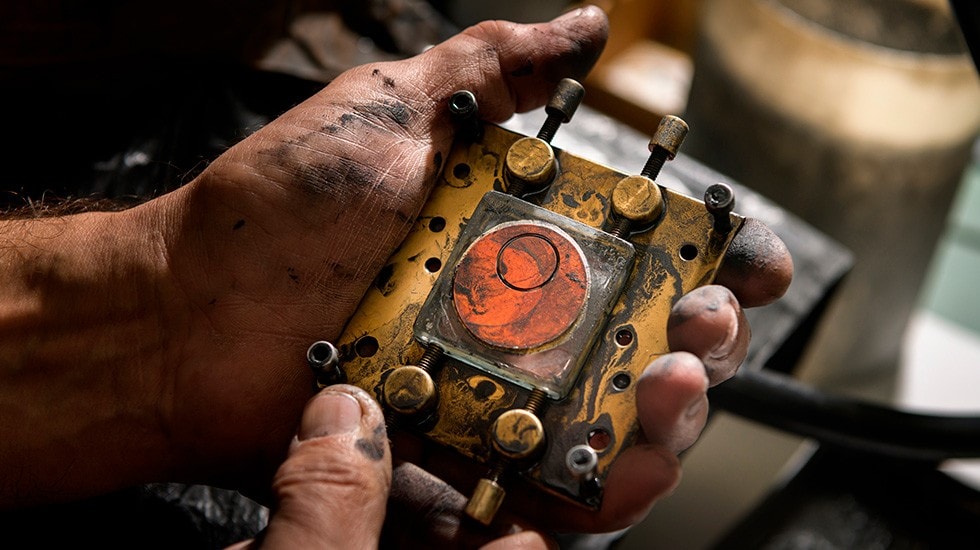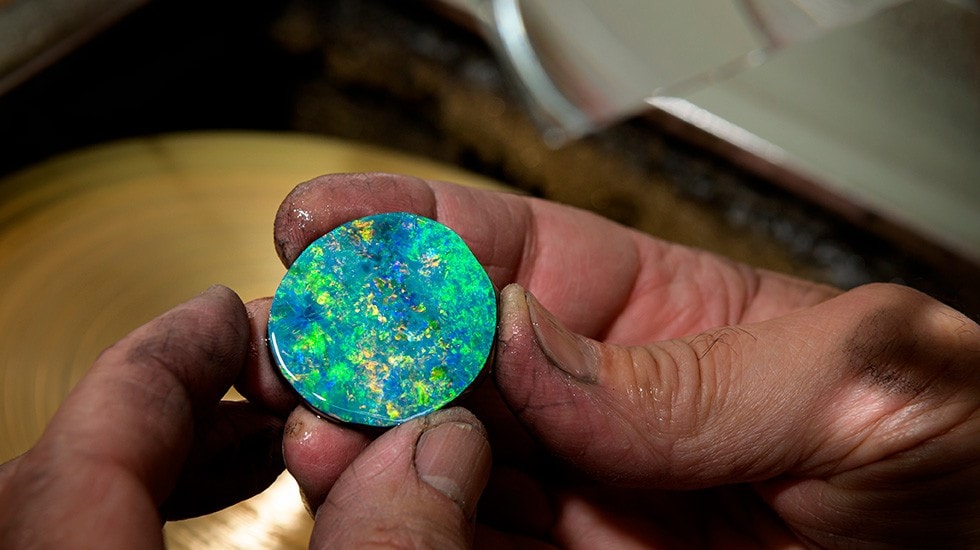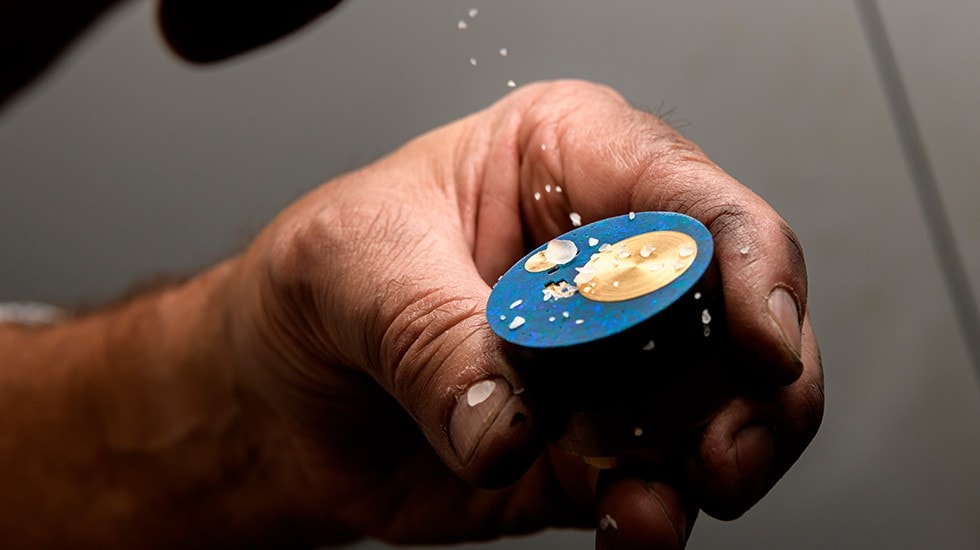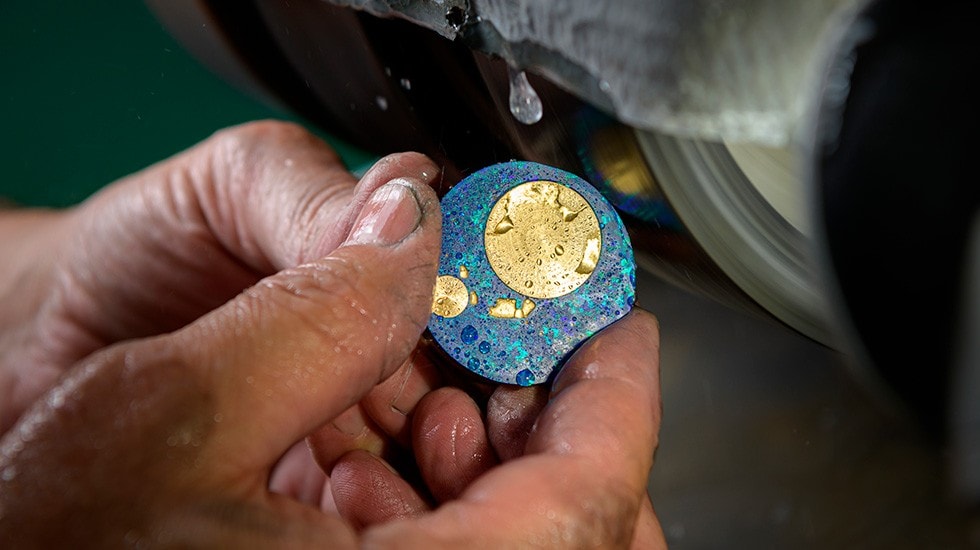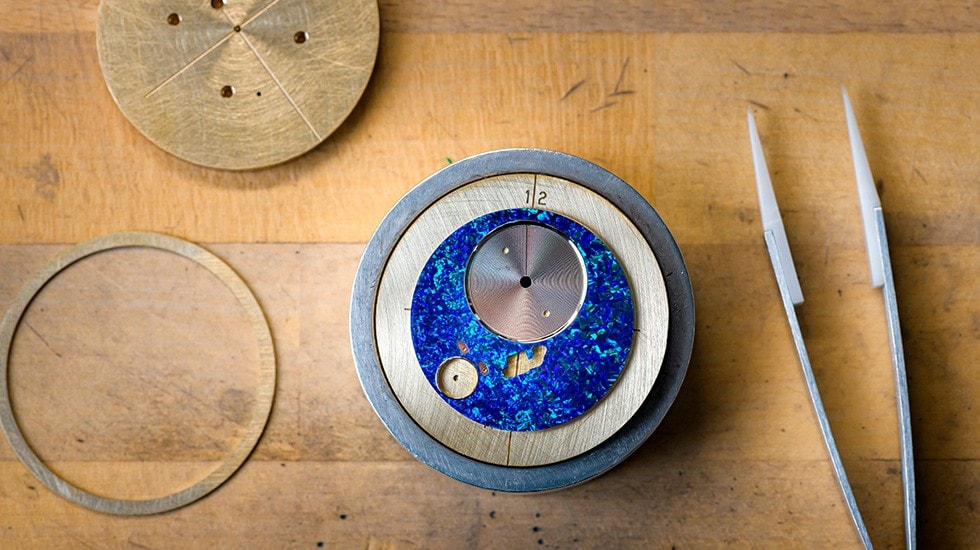JAQUET DROZ HONORS ITS ART OF MINERAL DIALS
Jaquet Droz unveils two new unique timepieces devoted to opal carrying on the art of mineral dials, a rare artisanal skill it applies to breathe life into Earth's treasures.

The master watchmaker may have a few tricks up its sleeve. Perhaps it's a concealed signature, a finish or an adornment known only to the brand. In the world of Fine Watchmaking, these hidden details are the ultimate thrill for collectors. Yet there is a horological art whose only goal is to be shown, its very last quiver unveiled: the art of mineral dials. These dials are the stunning visage of a timepiece. They are what make it one of a kind and shape its identity. They are the embodiment of the Philosophy of the Unique and the Art of Astonishment so cherished by Jaquet Droz.

The watchmaker has turned this craft into a signature expertise. Crafted for both men and women, these mineral dials are made in a number of diameters, but never in great number. Solely released as a solitary piece or limited series, these exceedingly exclusive specimens are unique to Jaquet Droz. Jaquet Droz paints its timepieces with onyx, jade, serpentinite, jasper, petrified wood, meteorite and opal, using them like pigments on a watchmaking canvas.

No two pieces are ever alike. The only thing that stays the same is the process that breathes life into the dials. It begins by selecting the rare mineral. At Jaquet Droz, this happens through a partnership with one of the greatest artisans of semi-precious stones. The stones are collected from the four corners of the globe, from Asia to Europe to the Americas. Then they are brought to Switzerland to start the painstaking cutting process. The most breathtaking sections of the rocks are chosen. They are carefully polished by hand and sliced into disks that are about the size of the final piece. Done with traditional saws and grinders, this simple cut alone takes an hour to obtain an initial dial form.
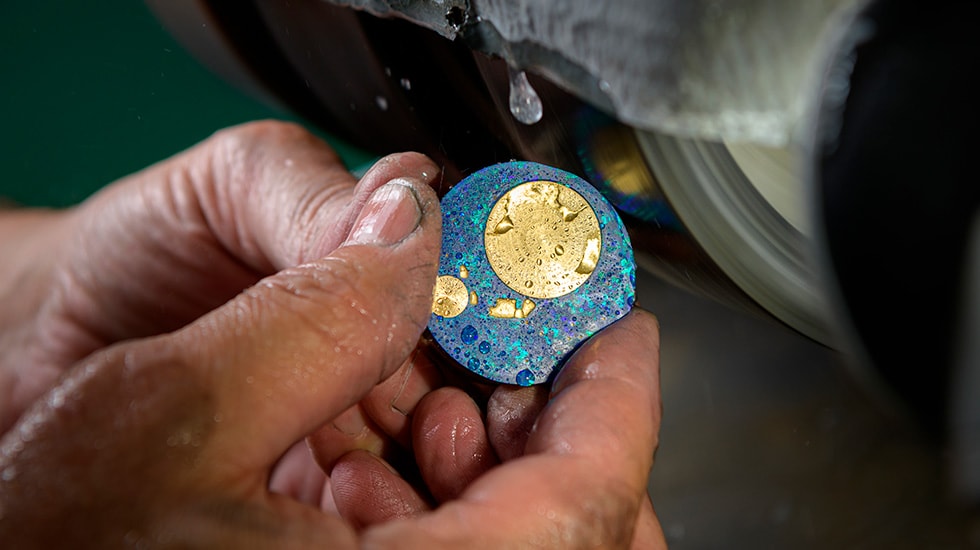
Every dial is then polished once again and drilled to create tiny openings for the hands, apertures and appliqués. This is a crucial step because the pressure of the hole-making tools can still crack the mineral, depending on how hard it is. Extreme care must also be taken during the final hand-polishing step when the artisan gradually pares down each dial until it is 0.8 mm thick. Some stones, even the most opaque, become translucent when they are this thin. A miniature burr is used to deburr all around the edge, and then the outer rim is smoothed. This step is equally precarious because the thinnest parts of the stone can still break. It is now almost a perfect circle, entirely done by hand. The mineral dial is polished one last time, and then come the adornments: gold hands, round bands, appliqués or moving parts for automatons.

Throughout this long process, the artisan only uses his own instruments that he usually makes himself. Like expressive extensions of his fingers and artistic dexterity, these tools can send the slightest vibration from a stone right to the artisan's hand. These are the tools that reveal every dial's radiance, beauty and subtle reflections.
In the last few months, Jaquet Droz has unveiled a few very limited series that showcase this elaborate work. It can be seen in the Grande Seconde Off-Centered in Black Jade. This very minimal piece is solely adorned with three hands and two gold circles so the power of the jade shines through on a deep black 43 mm dial.

It is featured with Chinchilla Red petrified wood on the Loving Butterfly Automaton where warm coppery tones lend an autumnal touch to the Cherub's animated flight and the chariot pulled by a butterfly. Then there is the Spiderman jasper on the dial of an exquisite Petite Heure Minute issued in a limited series of eight. A hand-carved gold dragon literally moves across this mineral dial.
The Opal Loving Butterfly Automaton

Opal is in a class by itself. It is special by its name: “opal” comes from the Sanskrit word “upala” for “precious stone.” Special by its origin: opal is almost exclusively found in Australia. Special by its distinct look: “crystal” opal has a very unique iridescence where it changes colors depending on the viewing angle. For opal with a translucent background, the word “opalescence” was coined to describe the optical diffraction phenomenon.

Jaquet Droz is now unveiling a pair of unique timepieces that capture this singular brilliance: two Opal Loving Butterfly Automaton watches with a red gold or white gold case. They are each a one-of-a-kind specimen of opal’s optical properties, an interplay of blue, green, yellow, and pink crystals and the thousands of mid-tones between each color. Sparkling and dynamic, they are the latest heirs to opal’s legend, the story of a mineral expressing love and passion, if not burning desire. A seductive stone with a reputation for lowering inhibitions. Worn against the skin, it is a hallmark of loyalty and faithfulness. On each of these unique pieces, opal gives form to a stunning dial, a mineral stage upon which Jaquet Droz performs its Art of Astonishment.
“Some watches tell time. Some tell a story”
Discover all brand news
-
09 September 2024
-
28 September 2023
-
03 July 2023
